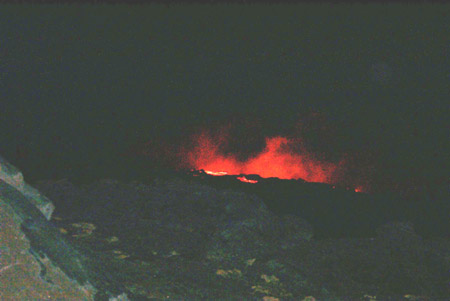As noted on the Clean Air Branch of the State of Hawaii Department of Health’s web page, “[a]t most times and in most places in Hawaii, we enjoy some of the best air quality in the nation.” This is, of course, because of the islands location in the middle of the Pacific Ocean and the fact that Trade Winds are the most common kinds of wind patterns over the islands throughout most of the year. And yet, between anthropogenic and natural sources, there are more poor air quality days in Hawaii then one would expect. Hawai’i county in 2008 was the 7th worst U.S. county in terms of number of unhealthy days, affecting mostly in low density populated areas. Even Honolulu, which is ranked among the best metropolitan areas in the country for air quality overall must be noted with poor days, particularly with respect to particulates in the PM2.5 range.

While there are anthropogenic contributors, the most famous point-source villain in the air quality story of Hawaii must be the very active volcano on the Big Island. Kilauea on the Big Island of Hawaii has been in continuous eruption since 1983. Daily emissions may contain about 2000 metric tons of sulfur dioxide and aerosol sulfates, but also include about 1 ton of heavy metals, including lead and mercury.
With Kona winds in winter months, the emissions from Kilauea reach Oahu (e.g. this article from the Honolulu Advertiser in 2004), and the air acquires the typical haze one would normally associate with some U.S. mainland cities like Los Angeles.
Here’s a link to the National Park Service’s web cam and current conditions. http://hvo.wr.usgs.gov/so2/havoalert.php. The Huffington Post published a number of incredible images of “voggy skies.”
After 35 years, the eruption of Kilauea effectively ended. Visit SOEST Hawaii for an excellent history of the eruption.
